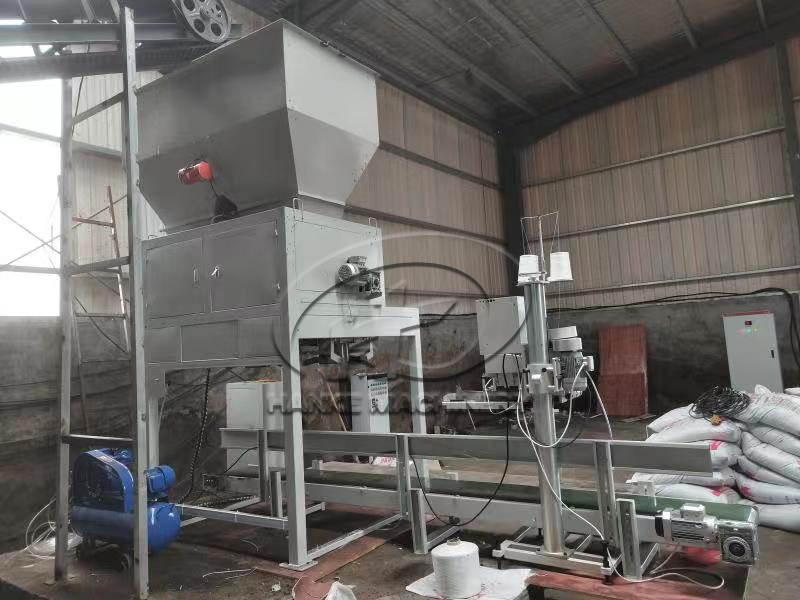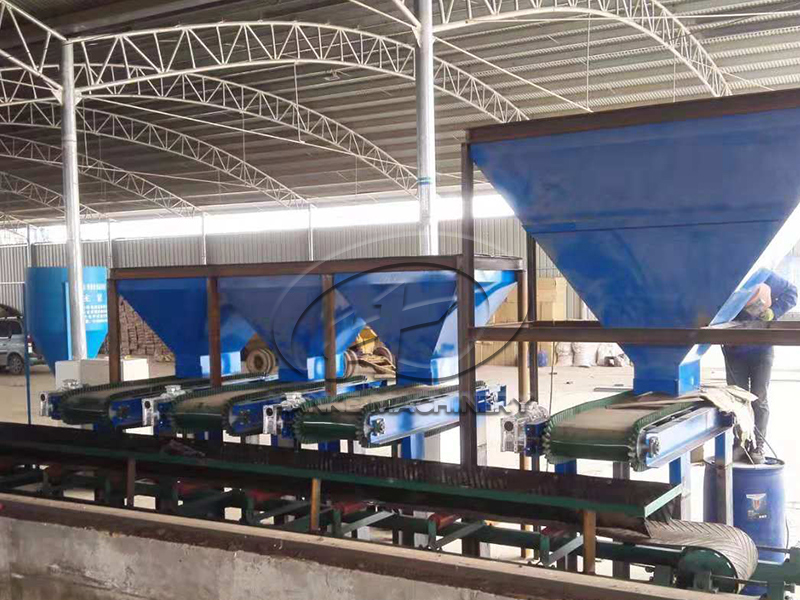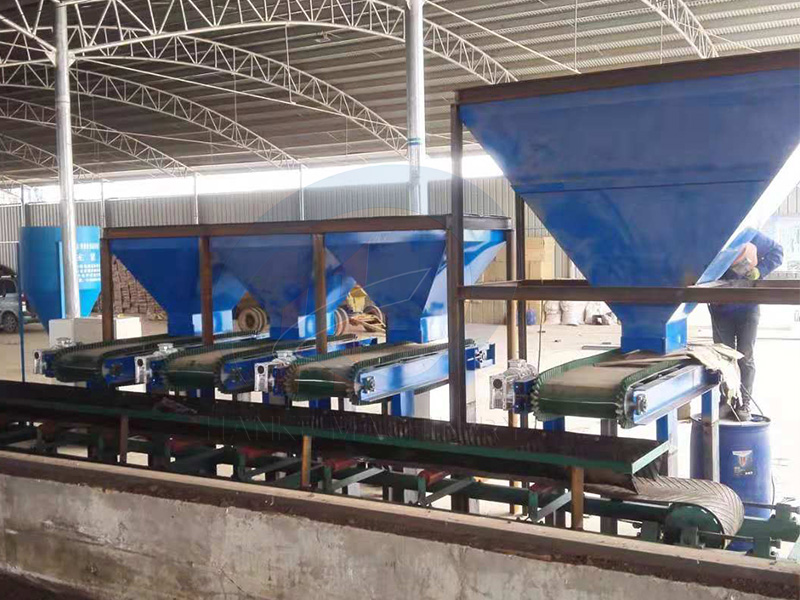 HOME > News > Industry News > What aspects does the specialized maintenance of the organic fertilizer double-pit granular packagin
HOME > News > Industry News > What aspects does the specialized maintenance of the organic fertilizer double-pit granular packagin Update time : 2025-10-31 Publisher:Zhengzhou Hanke Machinery
Specialized maintenance for the dual-bucket granular packaging machine for organic fertilizer focuses on the weak points and key systems that are vulnerable to external influences in specific scenarios. It aims to address issues that are not covered by regular maintenance. The maintenance is specifically carried out around the following four core aspects:
I. Special Maintenance for Damp/Dusty Environments: Addressing the Characteristics of Organic Fertilizer Materials
Organic fertilizer pellets are prone to absorbing moisture and clumping, generating dust. Over time, this can lead to rusting, clogging or precision drift of equipment components, and targeted protection is required.
1.Moisture-proof treatment
Weighing system: Wipe the sensor surface with a dry cloth. Place silica gel desiccant in the sensor junction box (replace once a month) to prevent moisture from causing signal interference. If there is condensation on the inner wall of the weighing hopper, use a hot air gun (low temperature setting) to dry it before starting the machine to prevent material adhesion.
Electrical control box: Open the box door for ventilation for 30 minutes every week, clean the dust inside the box (using low-pressure compressed air), and check if the terminal blocks of the circuits are rusted (if so, sand them with fine sandpaper and apply anti-rust agent).
2. Dust-proof and clogging prevention
Feeding channel: Disassemble the feeding auger every month, clean the dust and lumps on the blades (use a soft brush, do not scrape hard), and check if the inner wall of the channel is worn (wear will cause material residue and needs to be welded and polished in time).
Exhaust port: If the equipment is equipped with a dust-proof exhaust device, remove the filter screen for cleaning once a week (rinse with clean water and dry it in the air). This is to prevent the filter screen from getting clogged, which may cause abnormal air pressure in the hopper and affect the discharging speed.

II. Special Maintenance for Long-Term Shutdown / Seasonal Shutdown: Preventing Component Aging
If the equipment is idle for more than one week (such as during holidays or off-seasons), it is prone to malfunction due to material residue and component aging from prolonged inactivity. The key maintenance focus should be on "protection + cleaning".
1.Thoroughly clean the materials.
Disassemble the weighing hopper and the discharge door, clean the inner walls with warm water (add a small amount of neutral detergent), dry them and apply a thin layer of edible oil (to prevent rust); wipe the surface of the conveyor belt with a damp cloth to remove any residual materials and prevent mold.
2. Component protection measures
Drive components: motor bearings, conveyor belt roller bearings. Fill with an adequate amount of lithium-based grease (50% more than the daily maintenance amount) to prevent lubrication failure due to long-term static placement.
For pneumatic components: Release the compressed air in the air cylinder, disassemble the air pipe joints, and apply pneumatic-specific lubricating grease at the interfaces to prevent the sealing rings from drying out and aging.
3. Whole Machine Protection
Cut off the main power supply, unplug all plugs, and cover the equipment surface with a waterproof and dustproof cover. If placed outdoors or in a damp workshop, place wooden blocks under the rack bottom to prevent moisture.
III. Special Maintenance after Faults: Avoiding Recurrence of Problems
When equipment malfunctions such as material jamming, precision deviation, and material leakage occur, after repair, it is necessary to conduct targeted investigations into the "root cause" to prevent recurrence.
1.Maintenance after material jamming
Check the feeding speed parameters: If the material gets stuck due to the fast feeding speed being too fast, reduce the fast feeding ratio in the controller (for example, from 80% to 60%), and test the suitable speed for different material moisture contents, recording the optimal parameters.
Repair deformed parts: If the feeding auger or the discharge door is deformed due to material jamming, the parts need to be corrected or replaced. After installation, test the movement trajectory (such as whether the discharge door is fully closed) to avoid material leakage caused by gaps.
2. Maintenance after Precision Deviation
Sensor depth inspection: In addition to regular calibration, check if the sensor mounting bracket is loose (use a level to measure the flatness of the bracket; if it is tilted, adjust it), and confirm that the sensor cable is not damaged (damage can cause signal loss and the cable needs to be replaced).
Material property adaptation: If the accuracy deviation is caused by changes in material moisture or particle size, the feeding mode should be adjusted (for example, use "slow - medium - slow" three-speed feeding for damp materials), and the corresponding material parameters and formulas should be stored in the controller.
IV. Special Maintenance after High-Load Operation: Alleviating Component Fatigue
When the equipment operates continuously for more than 12 hours per day (such as during peak production seasons), the core components are prone to performance degradation due to fatigue. Therefore, it is necessary to focus on "inspection and maintenance".
1.Core component status detection
Motor: Use an infrared thermometer to measure the temperature of the motor housing (normal temperature should not exceed 60℃). If the temperature is too high, check whether the cooling fan is blocked (clean the fan dust), or whether it is due to excessive load and the operation time needs to be adjusted (for example, stop the machine for 10 minutes for cooling every 4 hours of operation).
Conveyor belt: Check the belt tension (press the belt by hand, the depression should not exceed 10mm). If the tension is insufficient, adjust the tensioning wheel. If there is wear on the surface of the belt, repair it in time (use special belt adhesive) to prevent the damage from expanding.
2. Calibration of Pneumatic System Pressure
Check the output pressure of the air compressor (it should be stable at 0.6 - 0.8 MPa), and adjust the pressure reducing valve of the pneumatic three-piece set to ensure that the working pressure of the bag clamping cylinder and the discharge door cylinder is stable (pressure fluctuations will cause the action to be stuck, affecting packaging efficiency).
Specialized maintenance should be flexibly adjusted in accordance with the actual usage scenarios. For instance, during the rainy season in the south, emphasis should be placed on moisture prevention, while in the dry season in the north, dust blockage prevention should be prioritized. Through targeted maintenance, sudden malfunctions can be effectively reduced and the service life of key equipment components can be prolonged.

see details +

see details +

see details +

see details +

 Tel:+86 17319777703
Tel:+86 17319777703
 E-mail:hkautomaticpack@foxmail.com
E-mail:hkautomaticpack@foxmail.com
 Address:Xingyang City, Zhengzhou City, Henan Province.
Address:Xingyang City, Zhengzhou City, Henan Province.
Privacy Policy Copyright © Zhengzhou Hanke Machinery Equipment Co., Ltd Co., Ltd.